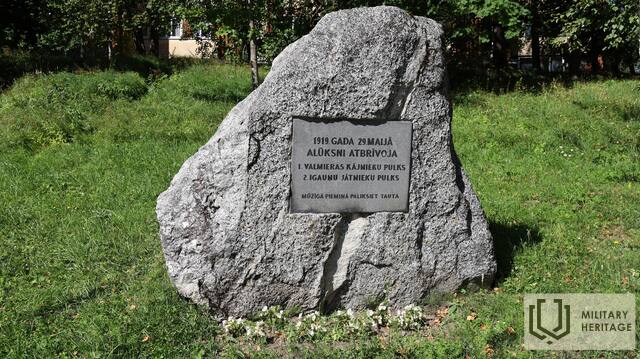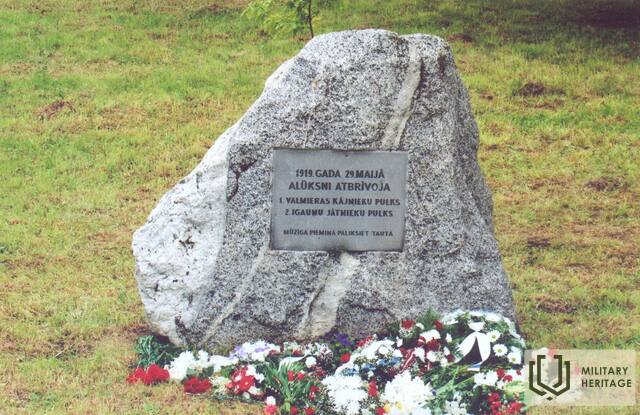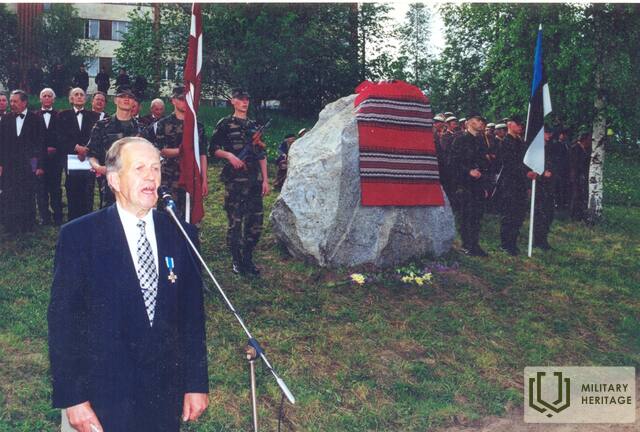Memorial stone to the liberators of Alūksne
Memorial site


Located in Alūksne, at the intersection of Helēnas and Alsviķu streets.
The memorial stone was unveiled on May 29, 1999, on the 80th anniversary of the liberation of Alūksne. The stone carving work was carried out by sculptor Ainārs Zelčs.
On March 31, 1919, the Northern Latvian Brigade was founded in the city of Tartu, with the task of liberating Vidzeme and Latgale. The brigade consisted of the combined 1st Valmiera and 2nd Cēsis Infantry Regiments, later also the Northern Latvian Partisan Regiment, two cavalry squadrons and two artillery batteries. On May 26, these forces occupied Valmiera, but on May 27, the 1st Valmiera Infantry Regiment, together with the 2nd Estonian Cavalry Regiment, launched an attack in the direction of Alūksne. The Bolsheviks were unable to repel further attacks, and on May 29, 1919, Alūksne was liberated.
Used sources and references:
History of Alūksne. End of the 19th century - January 2, 1920. Research materials of the Alūksne Museum. No. 4 – 13.
Let's be together on the 91st anniversary of the liberation of Alūksne! Alūksne News. May 26, 2010.
Related timeline
Related topics
Related stories
About the Latvian War of Independence and the events of 1918 in Alūksne
In 1918, when German troops entered Alūksne, the Latvian rifle battalions retreated to Soviet Russia. By the beginning of December 1918, a German regime was established and reorganizations were carried out. After Germany surrendered in the war, the Bolsheviks returned to Alūksne and restored their power. Finnish volunteers also fought as part of the Estonian army in the Latvian War of Independence. On February 21, 1919, fierce battles took place between the Bolsheviks and the Finnish volunteer regiment “Northern Boys” in Alūksne, near the station.
About the Latvian War of Independence and the events of 1919 in Alūksne
On March 27, 1919, the 1st Valmiera Infantry Regiment, together with the Estonian Guards (kaitselit) battalions of Tallinn (then Rēvele) and Tērbatas, as well as three armored trains, began the liberation of Latvia from the Bolsheviks from the banks of the Melnupe River.
Anšlavs Eglītis's memories of the Latvian War of Independence and the events of 1919 in Alūksne
On March 27, 1919, the 1st Valmiera Infantry Regiment, together with the Estonian Guards (kaitselit) battalions of Tallinn (then Rēvele) and Tērbatas, as well as three armored trains, began the liberation of Latvia from the Bolsheviks from the banks of the Melnupe River.











